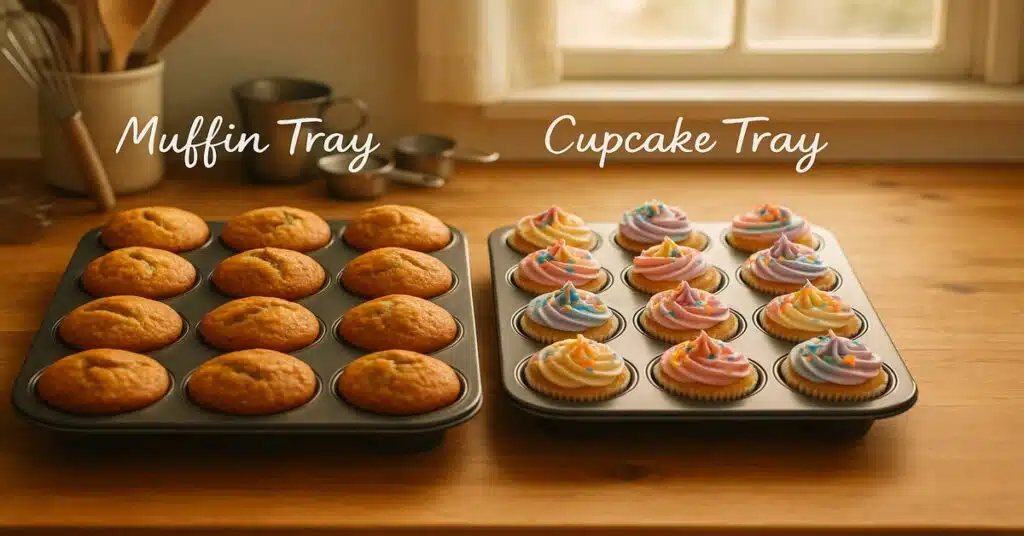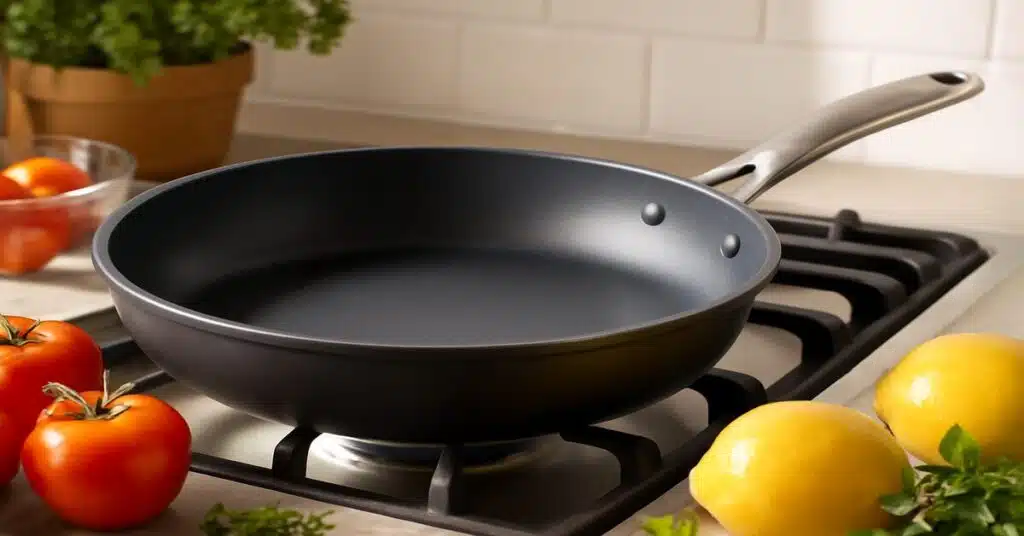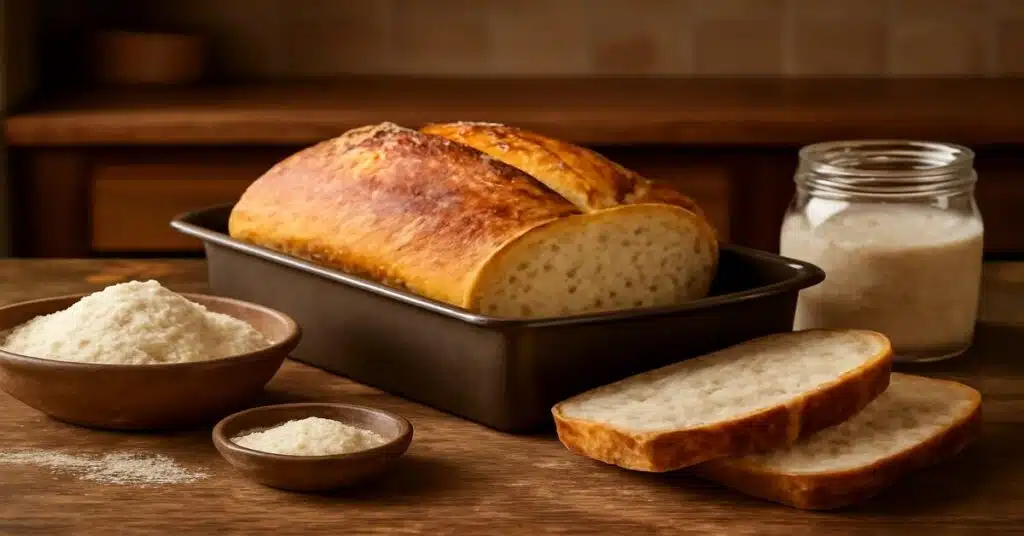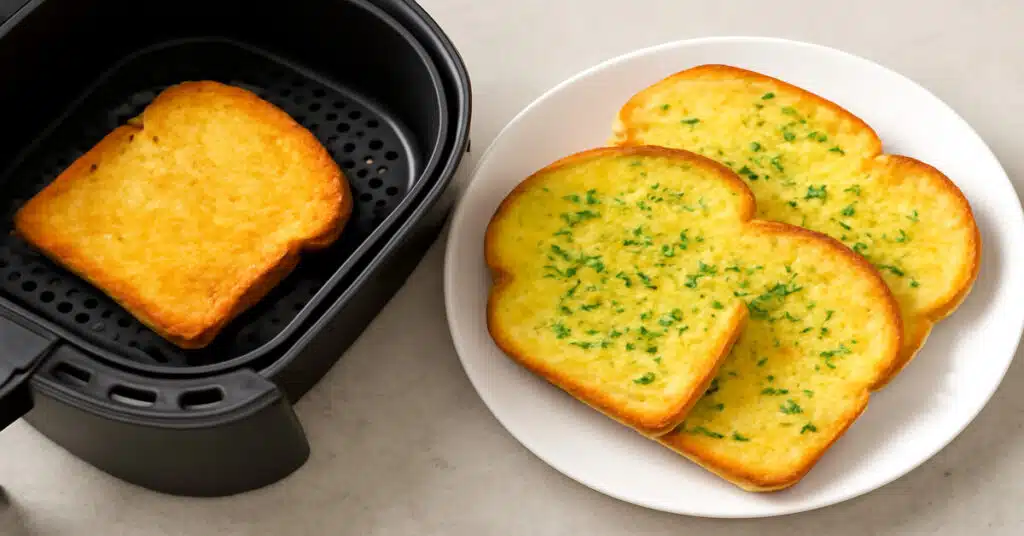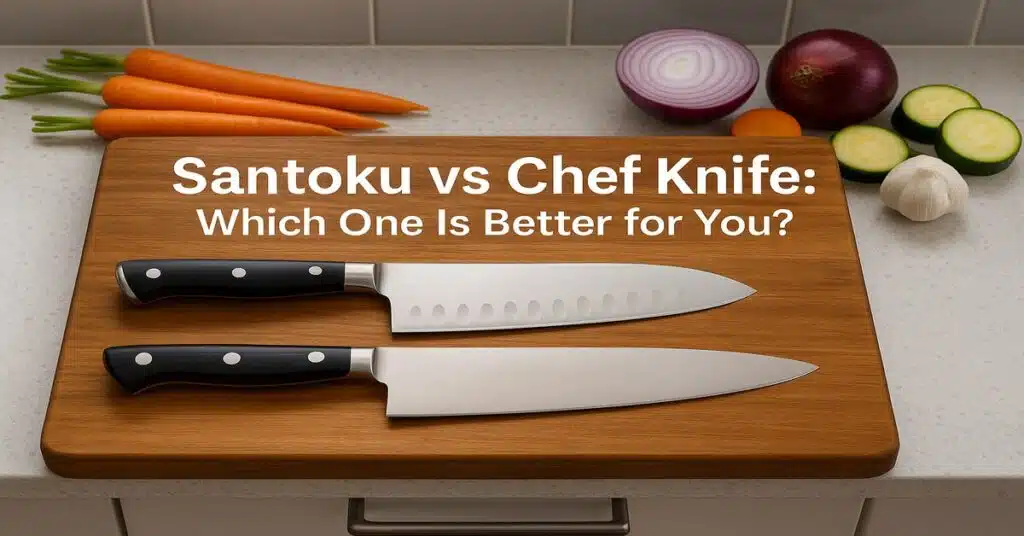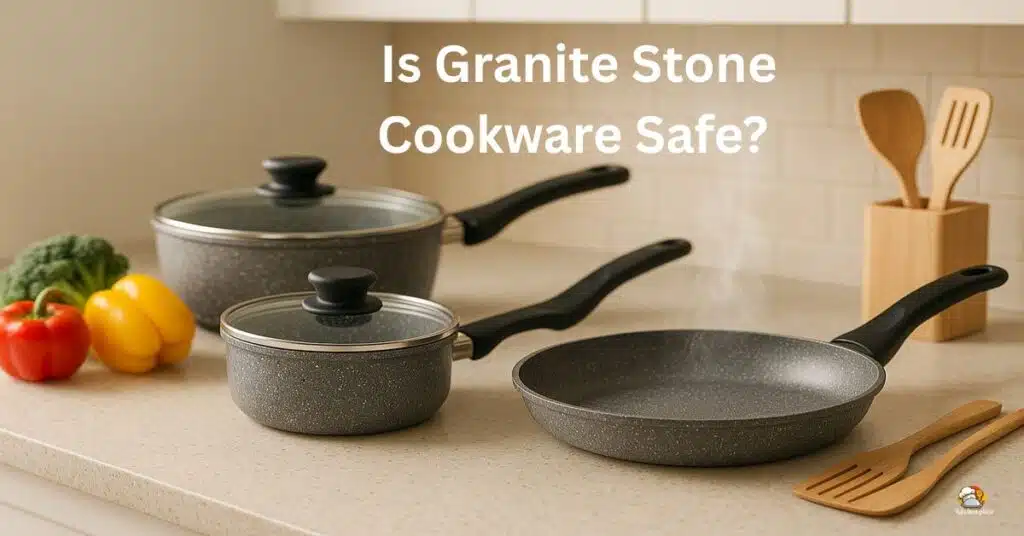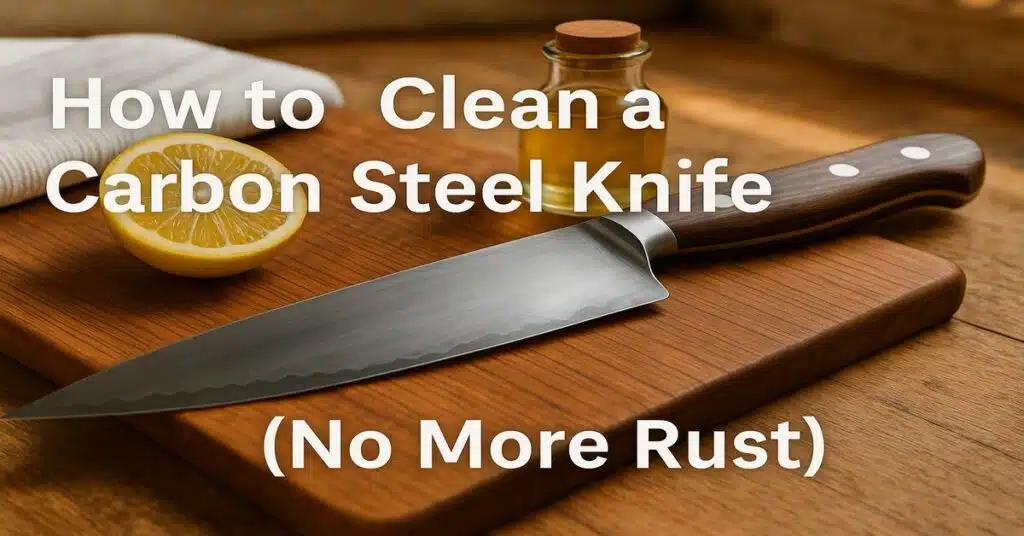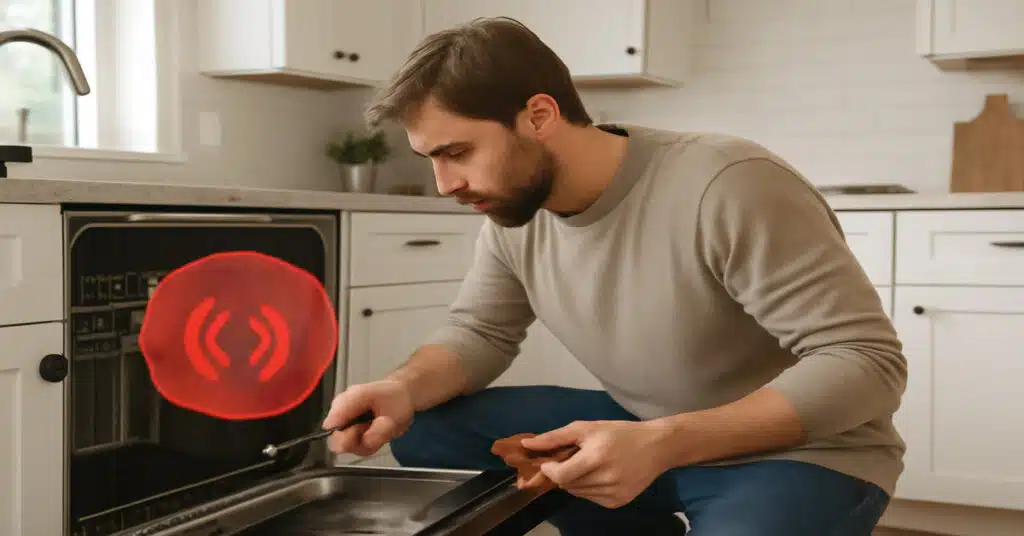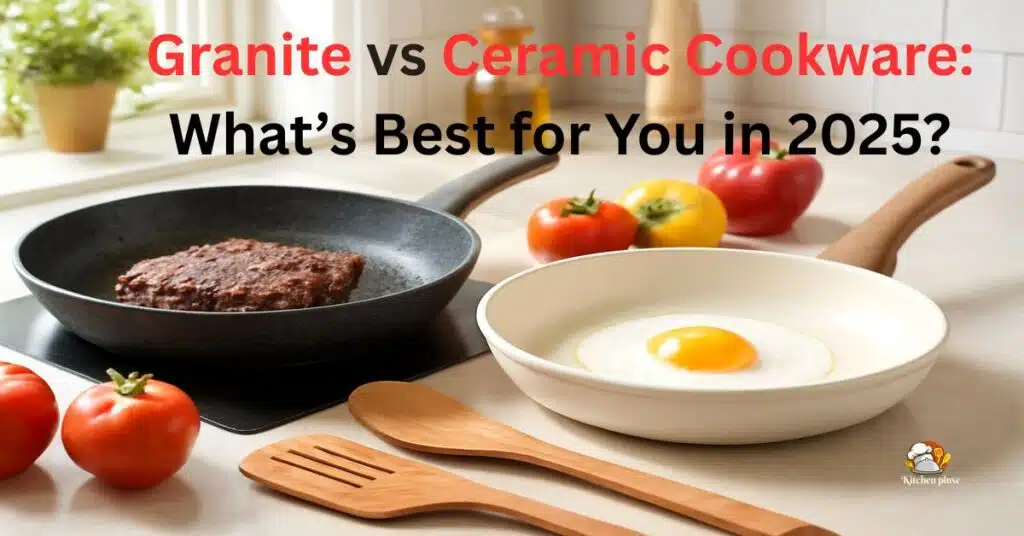Muffin and cupcake trays may look almost identical — same size, same shine, and the same number of cups.But when you bake with them, the results tell a completely different story.
Small design details like cup depth, shape, and spacing can change how your baked goods rise, brown, and taste.
In this simple 2025 guide, you’ll discover the real difference between muffin trays and cupcake trays — how their size, shape, and materials affect your baking results.
After testing both types at Kitchenpluse.com, I’ll share what truly separates them and which tray performs better in everyday kitchens.
Are Muffin and Cupcake Trays the Same?
No, muffin trays and cupcake trays are not the same.
Muffin trays have deeper, straight-sided cups made for thick batters like banana or oat muffins, while cupcake trays are shallower with curved sides, designed for lighter batters and frosting.
Baking Results: Which Performs Better?
When you bake with both trays, the results show a clear difference. A muffin tray holds more batter and keeps heat longer, giving muffins a taller rise, crisp edges, and a golden crust.
A cupcake tray, on the other hand, bakes faster and more evenly, creating soft, fluffy cupcakes that are perfect for frosting.
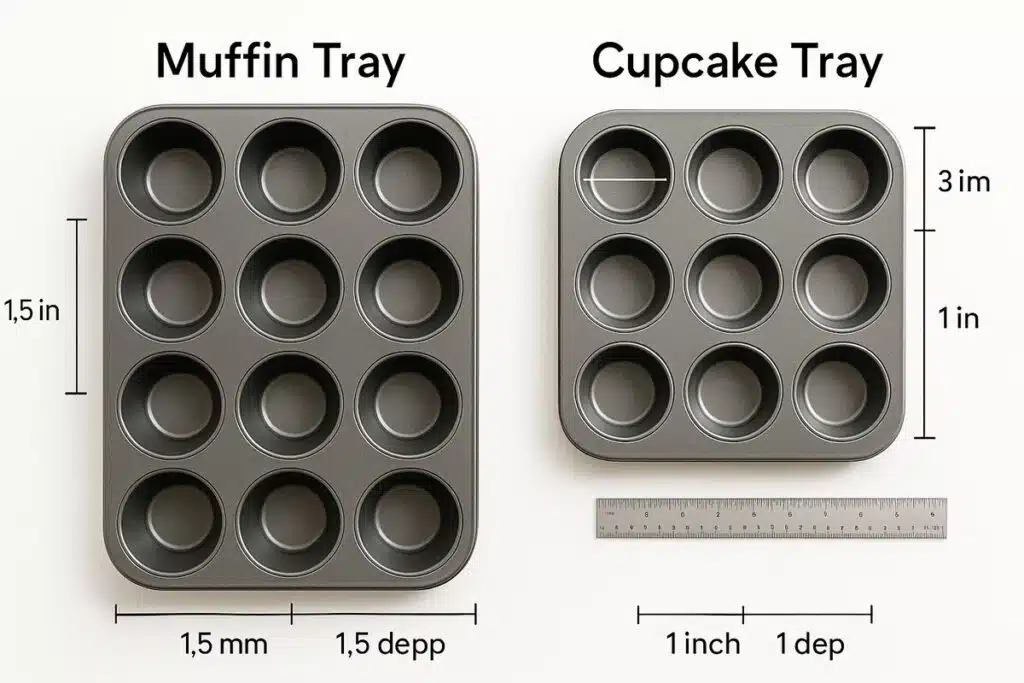
Here’s a simple comparison that shows how baking results differ 👇
| Feature | Muffin Tray | Cupcake Tray |
| Heat Retention | Holds heat longer for a tall dome | Heats quickly for even baking |
| Baking Time | Slightly longer (20–25 min) | Shorter (15–20 min) |
| Texture | Firm with crisp edges | Light and airy crumb |
| Best For | Thick batters like banana, oat, or bran | Soft batters like vanilla or velvet |
Muffin trays give more structure and rise, while cupcake trays give softer, evenly baked cupcakes.
If you want that bakery-style dome, muffins win. If you love delicate, frosted cupcakes, cupcakes take the crown.
Baking Tip
To see the real difference, try baking the same batter in both trays at 350°F.You’ll notice that muffins rise higher and brown deeply, while cupcakes stay light and spongy.
This small test clearly shows how tray depth and heat retention change baking results.
Can You Bake Cupcakes in a Muffin Tray?
Yes, you can bake cupcakes in a muffin tray — it works perfectly if you make a few small adjustments.
Since muffin trays are deeper and hold more heat, cupcakes may rise higher and bake a little slower than normal.
To fix this, fill each cup about two-thirds full and reduce the baking time by 2–3 minutes compared to a regular cupcake tray.
You can easily bake cupcakes in a muffin tray — just adjust the batter level and baking time for soft, evenly baked cupcakes every time.
Pro Baking Tip
Use paper liners inside the muffin tray to help cupcakes hold their shape and prevent sticking. If you skip liners, lightly grease each cup before adding batter for smooth release and easy cleanup.
Liner Use, Stickiness & Nonstick Behavior
When baking muffins or cupcakes, liners and pan coating change how your baked goods look and release from the tray.
Most cupcake trays are meant to be used with paper liners, while muffin trays can be used both with or without them — it depends on the batter and the result you want.
If your tray has a nonstick coating, you can skip liners for dense muffins.
But for cupcakes or sticky batters, always use paper liners to prevent sticking and keep their shape during baking.
Use liners for cupcakes and nonstick pans for muffins. Liners make cupcakes release cleanly, while nonstick trays help muffins form crisp edges.
When to Use a Muffin Tray
Use a muffin tray when you bake thick, heavy batters that don’t need frosting. Muffin trays have deeper cups and hold more batter, which helps muffins get a tall dome and crisp golden edge. They’re perfect for recipes that need slow, even heating and a slightly chewy inside.
✅ Best time to use a muffin tray:
- For banana, oat, bran, or savory cheese muffins
- When you want taller tops and crisp edges
- If you prefer baking without paper liners
Pro Tip:
Grease nonstick muffin trays lightly and fill each cup about three-quarters full for perfect rise and shape.
When to Use a Cupcake Tray
Use a cupcake tray when baking light, airy batters that will be decorated or frosted.
Cupcake trays have shallow, rounded cups, so they bake faster and more evenly, creating soft and fluffy cupcakes.
They’re ideal when you want neat, uniform shapes that hold frosting beautifully.
✅ Best time to use a cupcake tray:
- For vanilla, chocolate, or red velvet cupcakes
- When you need even size and smooth tops
- If you plan to frost or decorate
Pro Tip:
Always use paper liners in cupcake trays — they help cupcakes release cleanly, stay moist, and look professionally finished.
Material Matters: Silicone, Metal, Ceramic – Which Is Best?
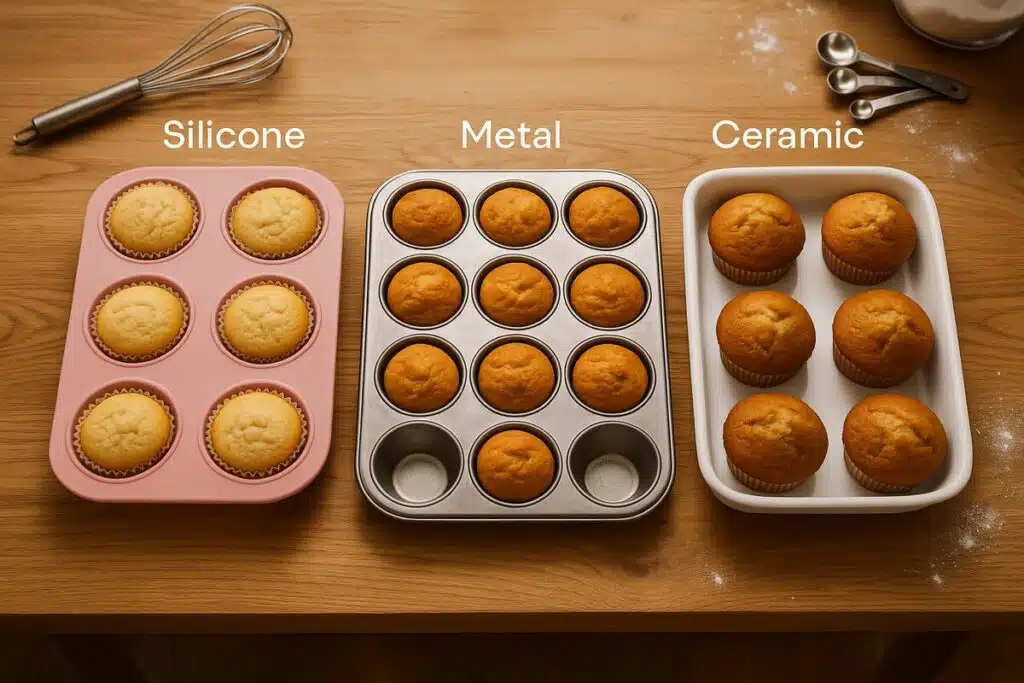
I baked all three. Here’s the truth:
| Material | Pros | Cons |
| Silicone | Flexible, easy to clean, colorful | Doesn’t crisp edges |
| Metal | Classic choice, heats evenly | Can rust, needs greasing |
| Ceramic | Beautiful presentation, even heat | Fragile and heavy |
My favorite? Silicone cupcake trays for small batches. Metal muffin tins for big, fluffy muffins.
Which One to Buy: A Practical Guide for U.S. Home Bakers
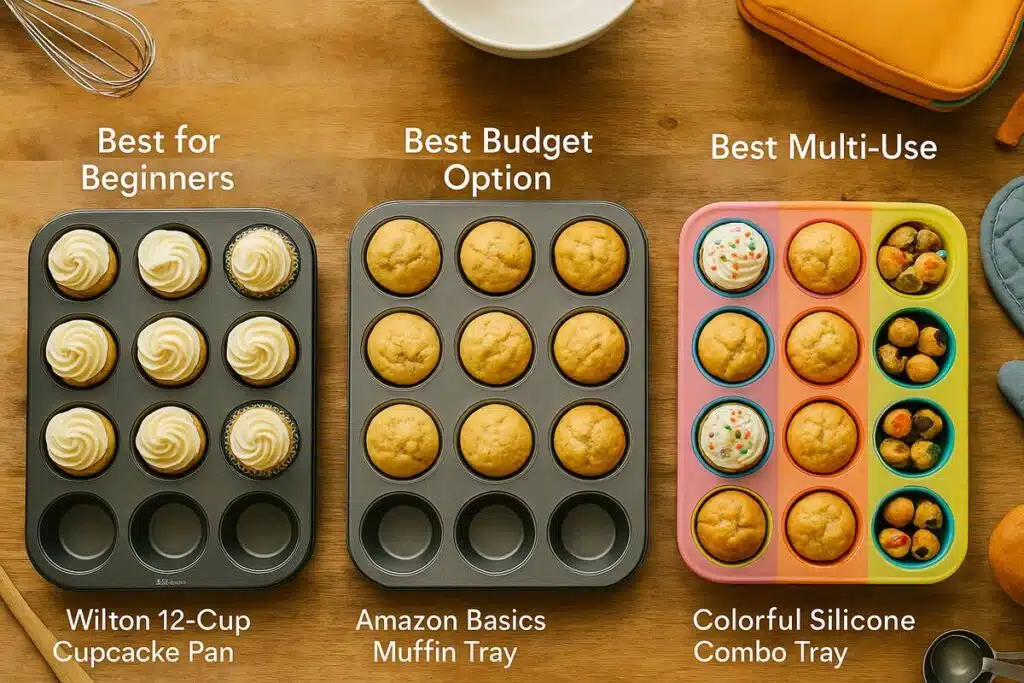
Not sure where to start? Here’s my quick buying guide based on years of baking and helping friends choose their first pans.
- For Beginners:
Wilton 12-Cup Nonstick Cupcake Pan — affordable, reliable, widely available. - For Budget Bakers:
Amazon Basics Muffin Tray — sturdy enough for regular use without breaking the bank. - For Multi-Use:
Silicone combo trays that let you bake muffins, cupcakes, and even egg bites!
If you’re a parent baking school snacks or birthday treats—trust me, go for the classic 12-cup nonstick set.
Materials and Cleaning
Both muffin trays and cupcake trays come in nonstick, aluminum, or silicone materials.
However, muffin trays are usually heavier and retain heat longer, which helps muffins brown evenly and develop crisp edges.
Cupcake trays are lighter, cool faster, and are easier to clean, making them perfect for daily home baking.
Material Comparison
| Feature | Muffin Tray | Cupcake Tray |
| Weight | Heavier — holds heat longer | Lightweight — easy to handle |
| Material Options | Nonstick, aluminum, silicone | Nonstick, silicone, steel |
| Heat Retention | Excellent for even browning | Moderate — faster cooling |
| Ease of Cleaning | Needs gentle hand wash | Quick cleaning with mild soap |
Cleaning Tip
To keep your trays in top shape:
- Wash by hand with warm water and mild soap.
- Avoid steel wool or harsh scrubs to protect the nonstick layer.
- Dry fully before storing to prevent rust and water spots.
Which One Should You Buy?
So, which tray should you buy — muffin or cupcake?
It depends on what and how you love to bake.
If you enjoy making hearty muffins like banana, oat, or bran, go for a muffin tray. It gives better heat retention, a crispy golden top, and strong structure for dense batters.
But if you often bake light, frosted desserts, then a cupcake tray is your best choice.
It bakes evenly, cools quickly, and gives a smooth shape that’s perfect for decorating.
✅ Quick Recommendation:
- Choose a muffin tray for thick batters and tall domes.
- Pick a cupcake tray for soft, fluffy bakes with frosting.
- For all-purpose home baking, keep one of each — it covers every recipe.
Pro Tip:
Look for nonstick aluminum trays with a silicone coating. They’re durable, easy to clean, and perform beautifully for both muffins and cupcakes.
My Personal Baking Experience
When I started baking, I used one tray for everything. Cupcakes, muffins, even brownies.
But the more I experimented, the more I saw subtle differences—burned bottoms here, underbaked centers there. Switching from a shallow cupcake tray to a deeper muffin tin changed everything for my banana chocolate chip muffins.
These small changes built my confidence. Today, I know exactly which pan to grab, and I hope now—you do too
FAQs: muffin tray vs cupcake tray
Can I use one tray for both muffins and cupcakes?
Yes — you can use one tray for both muffins and cupcakes, but expect slight differences in results. Muffin trays are deeper and hold more batter, creating taller, denser muffins. Cupcake trays bake lighter cakes with smooth tops.
To get even results, fill only two-thirds of each cup and adjust the baking time by 2–3 minutes.
Are muffin trays deeper than cupcake trays?
Yes — muffin trays are generally 25–50% deeper than cupcake trays. This extra depth helps hold thicker batters and promotes taller muffin tops. Cupcake trays are shallower, designed for light, frosted cakes that bake faster and more evenly.
Do liners help with baking results?
Absolutely. Liners prevent sticking, promote even baking, and give cupcakes a smooth, clean finish. They also help retain shape and reduce heat exposure, preventing burnt edges. For muffins, liners are optional — but for cupcakes, they’re highly recommended.
What size is a U.S. cupcake tray?
A standard U.S. cupcake tray has 12 cups, each about 2.5 inches (6.35 cm) in diameter and 1 inch deep. Mini trays hold 24 cups, while jumbo trays usually have 6 large cups for bakery-size cupcakes. These standard sizes ensure even baking in most ovens.
What’s the difference between muffin and cupcake trays?
Mainly depth and shape. Muffin trays are deeper; cupcake pans are shallower with straighter walls.
Are muffin trays and cupcake trays the same?
No, muffin trays and cupcake trays are not the same. Muffin trays have deeper cups with straight sides for thicker batters, while cupcake trays are shallower and rounder, perfect for light, frosted cakes. Muffin trays hold more batter and give a taller dome, whereas cupcake trays create smoother tops for frosting.
Can I use a muffin tray to make cupcakes?
Yes, you can bake cupcakes in a muffin tray. Just fill each cup two-thirds full and reduce baking time by 2–3 minutes.
Use paper liners to prevent sticking and keep the cupcakes’ shape. Muffin trays retain more heat, so cupcakes may rise higher and brown slightly faster.
What can I use instead of a muffin tray?
If you don’t have a muffin tray, use oven-safe ramekins, silicone molds, or foil cups. You can also place paper liners on a baking sheet and fill them halfway —they’ll hold shape if the batter is thick. Silicone molds are best for even baking and easy release.
Are muffins healthier than cupcakes?
Generally, yes — muffins are healthier because they contain less sugar and butter, and often include whole grains or fruits. Cupcakes, however, are sweeter and higher in calories due to frosting and refined flour. Healthier muffins often use oats, bananas, or nuts instead of heavy icing.
About the Author:
Soazim is the founder and kitchen enthusiast behind KitchenPluse.com. With years of hands-on testing in cookware and baking tools, Soazim helps home cooks choose safe, durable, and high-performing kitchen gear.
When not comparing muffin trays and nonstick pans, you’ll find him experimenting with new recipes and sharing practical kitchen tips that actually work.

